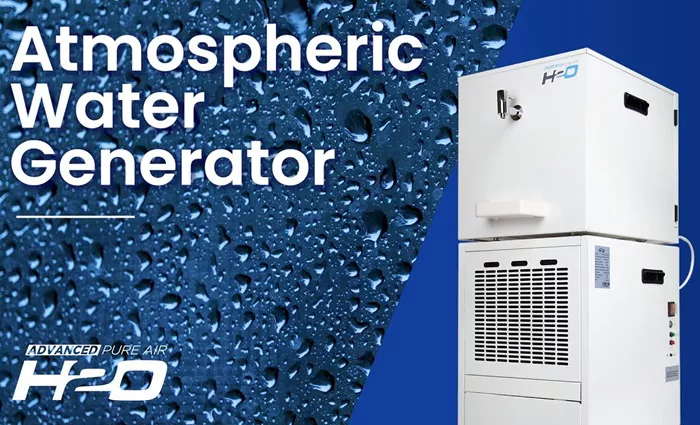In a groundbreaking effort to alleviate severe water shortages, five air-to-water generation stations have been established in some of Cambodia’s most impoverished rural areas. This initiative aims to combat poverty and enhance public health in remote regions lacking reliable water sources.
Rural areas in Cambodia often suffer from a scarcity of clean water, impacting residents’ daily lives and health. Many of these communities lack sufficient natural water sources such as rivers, lakes, and groundwater, which exacerbates the problem.
To address this, the Ministry of Rural Development, with the support of the Asian Development Bank (ADB) and funding from the Japanese government, has launched the third phase of the Rural Water Supply and Sanitation Services Development Programme. This project has seen the construction of air-to-water generation stations in the provinces of Kampot, Battambang, Preah Vihear, Banteay Meanchey, and Oddar Meanchey.
“Atmospheric water purification technology is a novel solution that provides clean drinking water to those in remote rural areas,” the ministry stated.
Srin Poutthy, director of the ministry’s rural water supply department, announced that the project, which started in 2020, is slated for completion by the end of 2024. The Japanese government has contributed $1 million through the ADB to fund this initiative.
“The establishment of these stations ensures that people have access to clean water, reducing dependence on contaminated sources,” Poutthy said. He highlighted that the project also aims to reduce poverty and improve living conditions by ensuring access to potable water and better sanitation.
Poutthy emphasized the importance of water quality testing, stating, “We conduct laboratory tests to ensure the water is safe before allowing public use.” The air-to-water machines, imported from Italy, are part of this rigorous process.
Khieu Teng, chief of Taken commune in Kampot province’s Chhouk district, reported that a station in his commune has been operational for nearly a year. This station produces 100 to 200 liters of water daily, serving hundreds of families across four villages.
“My area faces a severe clean water shortage, especially during the dry season. While not everyone can access it, many people now have a reliable source of clean water,” Teng said, noting that the water is much safer than drinking from ponds.
Residents pay a service fee of 2,000 riels (about $0.50) for a 20-liter container of water. Teng explained that this fee supports the station’s operational and maintenance costs, ensuring its sustainability. The funds collected are used for repairs, transportation, and environmental protection.
“We also focus on ensuring community ownership and proper management of the station,” the ministry added. “Without effective maintenance, the station’s functionality could be compromised.”
This initiative is part of the National Action Plan on Rural Water Supply, Sanitation, and Hygiene. The ministry reported that the current national coverage rate for clean water has reached about 81%, with a goal of achieving 100% by 2030.
- Cummins QSK60 Review: The Heavy-Duty Powerhouse For Industrial Applications
- 5 Best Whole House Diesel Generator
- How To Use An Electric Generator For Home?

